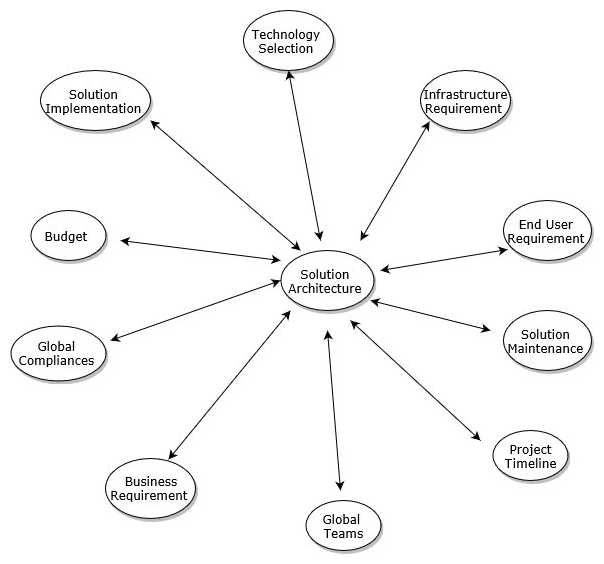If you ask around, there may be 10 different answers for the definition of solution architecture, and they may all be correct, as per their organization's structure. Each organization may see solution architecture from a different perspective, based on their business needs, organizational hierarchy, and solution complexity.
In a nutshell, solution architecture defines and foresees multiple aspects of a business solution, at both the strategic and tactical perspectives. Solution architecture is not just about a software solution. It covers all aspects of a system, which includes but is not limited to system infrastructure, networking, security, compliance requirement, system operation, cost, and reliability. As you can see, the following diagram provides a different aspect that a solution architect can address:

As shown in the preceding diagram, a good solution architect addresses the most common aspects of the solution...



